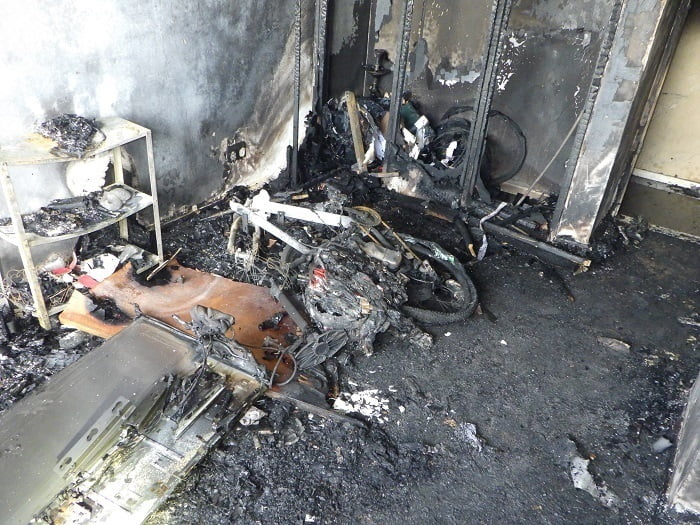
Extreme care is needed when charging lithium batteries for E-scooters and E-bikes after they sparked two recent house fires.
The living room of a house in North Ormesby was severely damaged after batteries were left on charge for a child’s electric bike. In Middlesbrough a hallway was badly damaged after an electrical charging point for an e-scooter caught fire.
The need for extra care covers Personal Light Electronic Vehicles (PLEV). These are E-Scooters, E-Bikes and Uniwheels.
Robin Turnbull, Area Manager, Prevention, Protection and Engagement said: “When these batteries are charged in communal areas or escape routes, a fire breaking out can quickly block people’s ability to escape. If the batteries become damaged or begin to fail, they can start incredibly ferocious fires. Lithium battery fires can spread quickly out of control, and within minutes have started a large fire.
“A battery bulging or swelling out of shape is a common sign of it failing. If your battery looks swollen, you should stop using it immediately. Similar signs include any type of lump or leaking from the device. Failing lithium batteries have also been reported to make hissing or cracking sounds.
“If your battery shows any of these signs of failing, immediately turn off the device and unplug it from the power source. Call the device manufacturer or retailer for further instructions. If the device starts smoking or catches fire, raise the alarm, get out, stay out and call 999 immediately.”
There are several ways you can reduce the risks when charging lithium batteries:
- Don’t block your exit with charging batteries or e-bike and e-scooters. If a fire breaks out, you won’t be able to safely leave your home. Store them in a shed or garage where possible.
- Keep an eye out for warning signs that your battery might be failing and becoming a fire risk.
- Never leave your battery to charge when you are out or whilst you sleep.
- Make sure your battery and charger meet UK safety standards.
- Use the correct charger for your battery, and make sure to buy from a reputable seller.
- Let your battery cool before charging it
- Unplug your charger once the battery has charged.
- Fit smoke alarms in the area where you charge your batteries
Please note the photograph is a stock image and not from the incidents referred to in the story.




